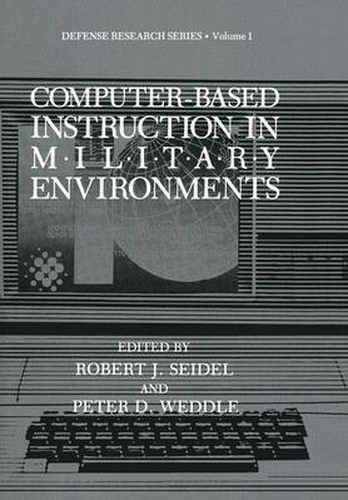Readings Newsletter
Become a Readings Member to make your shopping experience even easier.
Sign in or sign up for free!
You’re not far away from qualifying for FREE standard shipping within Australia
You’ve qualified for FREE standard shipping within Australia
The cart is loading…






This title is printed to order. This book may have been self-published. If so, we cannot guarantee the quality of the content. In the main most books will have gone through the editing process however some may not. We therefore suggest that you be aware of this before ordering this book. If in doubt check either the author or publisher’s details as we are unable to accept any returns unless they are faulty. Please contact us if you have any questions.
This collection of papers is the result of a symposium sponsored by NATO’s Defense Research Group Panel VIII in the Spring of 1985. The symposium came into being when it became obvious to the NATO countries that research, development and utilization of advanced technologies for training was the best means of increasing both training effectiveness and efficiency. This symposium was the second in a series of three devoted to training. The series was structured to cover all aspects of training. The first series addressed the value of training, the second one dealt with the application of training technologies and the third and last of the series focused on academic issues concerned with the effect of prior learning on subsequent learning. The fact that a major American publisher has determined that computer based instruction is the technology of greatest interest to the NATO community is not surprising. Advances in microprocessor technology have revolutionized both how and where we train. During this symposium there were a limited number of carefully chosen exhibits to demonstrate the various applications of computer based training techniques. In the following papers you will find both a practical and scientific basis for the way current and future training and training systems should be designed, applied and utilized. We know that training must be done faster and more effectively.
$9.00 standard shipping within Australia
FREE standard shipping within Australia for orders over $100.00
Express & International shipping calculated at checkout
Stock availability can be subject to change without notice. We recommend calling the shop or contacting our online team to check availability of low stock items. Please see our Shopping Online page for more details.
This title is printed to order. This book may have been self-published. If so, we cannot guarantee the quality of the content. In the main most books will have gone through the editing process however some may not. We therefore suggest that you be aware of this before ordering this book. If in doubt check either the author or publisher’s details as we are unable to accept any returns unless they are faulty. Please contact us if you have any questions.
This collection of papers is the result of a symposium sponsored by NATO’s Defense Research Group Panel VIII in the Spring of 1985. The symposium came into being when it became obvious to the NATO countries that research, development and utilization of advanced technologies for training was the best means of increasing both training effectiveness and efficiency. This symposium was the second in a series of three devoted to training. The series was structured to cover all aspects of training. The first series addressed the value of training, the second one dealt with the application of training technologies and the third and last of the series focused on academic issues concerned with the effect of prior learning on subsequent learning. The fact that a major American publisher has determined that computer based instruction is the technology of greatest interest to the NATO community is not surprising. Advances in microprocessor technology have revolutionized both how and where we train. During this symposium there were a limited number of carefully chosen exhibits to demonstrate the various applications of computer based training techniques. In the following papers you will find both a practical and scientific basis for the way current and future training and training systems should be designed, applied and utilized. We know that training must be done faster and more effectively.